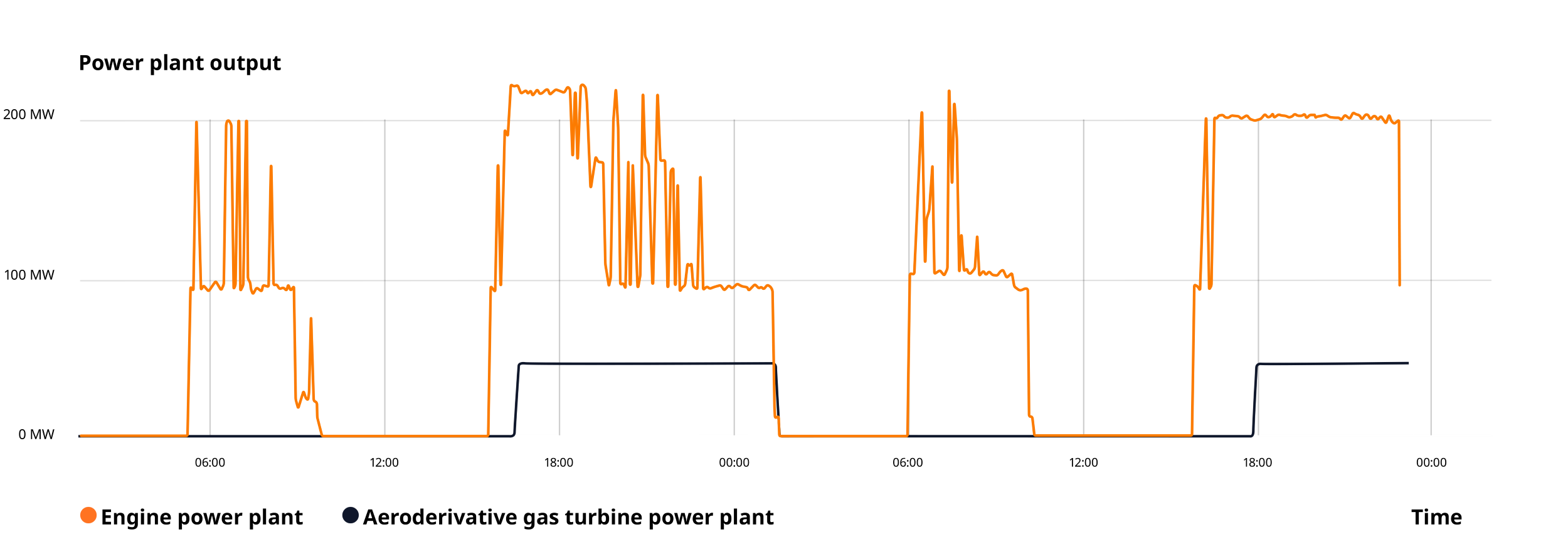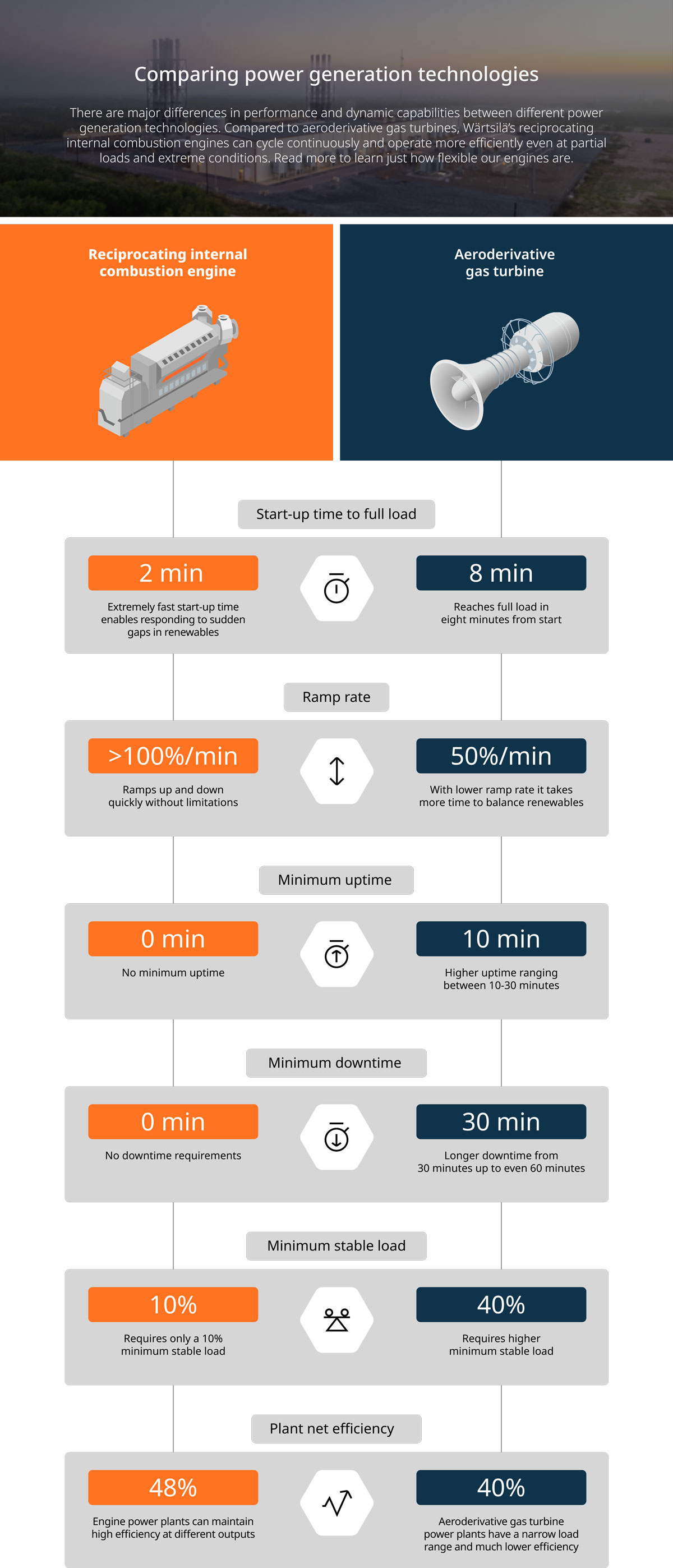
Power in a heartbeat - what flexibility truly means
Engine power plants have the added advantage of providing fast and unlimited starts and stops with no additional cost on maintenance.
The excellent performance can be maintained across a wide range of outputs and conditions.
In addition to operating on a variety of gaseous or liquid fuels, engines have low gas pressure requirements. Emitting fewer greenhouse gas emissions than aeros thanks to higher efficiency with additional value of extremely low water consumption.
The modularity of Wärtsilä technology brings adaptability, reliability, and cost-effectiveness.
Flexible power generation
Engine power plants are the best choice to ensure the stability and reliability of power grids using increasing amounts of renewable energy. This is because Wärtsilä engines can counter the intermittency of renewables and variations in weather in a heartbeat without additional cost.
What are the differences between reciprocating internal combustion engines and aeroderivative gas turbines?
Reciprocating internal combustion engines have been proven to start and stop quickly, adjust power rapidly, and operate efficiently at various loads when compared to aeroderivative gas turbines (aeros). To put it another way, engines are more flexible.

We gathered real-world data from the South Australia’s National Electricity Market to show how two power generation technologies, engines and aeros, behave as a part of the power system.
In the animation video below (Learn more section), we demonstrate the exceptional flexibility engine power plants provide in balancing renewables. There is now clear evidence engines are dispatched much more frequently and earlier than aeros. We can see how the engines provide continuous balancing of renewables on a minute-by-minute basis.
Not all grid-balancing technology is created equal
As we strive to meet the demands of a greener and more sustainable future, there is an urgent need for flexible, efficient energy solutions to address renewable intermittency challenges. Watch the "Battle of Technologies" for a ringside seat to a grid-balancing technology boxing match.

Engines are competitive on greenhouse gas (GHG) emissions
Engine power plants emit fewer greenhouse gas emissions than gas turbine power plants. This is partially because they are highly efficient, especially when running plants at 100% load, 25˚C temperature, 30% relative humidity, and consider methane’s global warming potential over 100 years.

Learn more
Related products
Technology comparison article series
These technologies differ in many aspects.
Find out how in the detailed technology comparison articles below.
1. Combustion engine vs. Aeroderivative gas turbine: Introduction
2. Combustion engine vs. Aeroderivative gas turbine: Executive summary
3. Combustion engine vs. Aeroderivative gas turbine: Six elements of dispatching
4. Combustion engine vs. Aeroderivative gas turbine: The advantages of modularity
5. Combustion engine vs. Aeroderivative gas turbine: Part-load efficiency
6. Combustion engine vs. Aeroderivative gas turbine: Pulse load efficiency
7. Combustion engine vs. Aeroderivative gas turbine: Derating due to ambient temperature
8. Combustion engine vs. Aeroderivative gas turbine: Fuel flexibility
9. Combustion engine vs. Aeroderivative gas turbine: Water consumption
10. Combustion engine vs. Aeroderivative gas turbine: Greenhouse gas emissions

Any information including facts, opinions or quotations, may be condensed or summarised and is expressed as of the date of writing and are based on publicly available sources believed to be reliable. The information may change without notice and Wärtsilä is under no obligation to ensure that such updates are brought to your attention.






